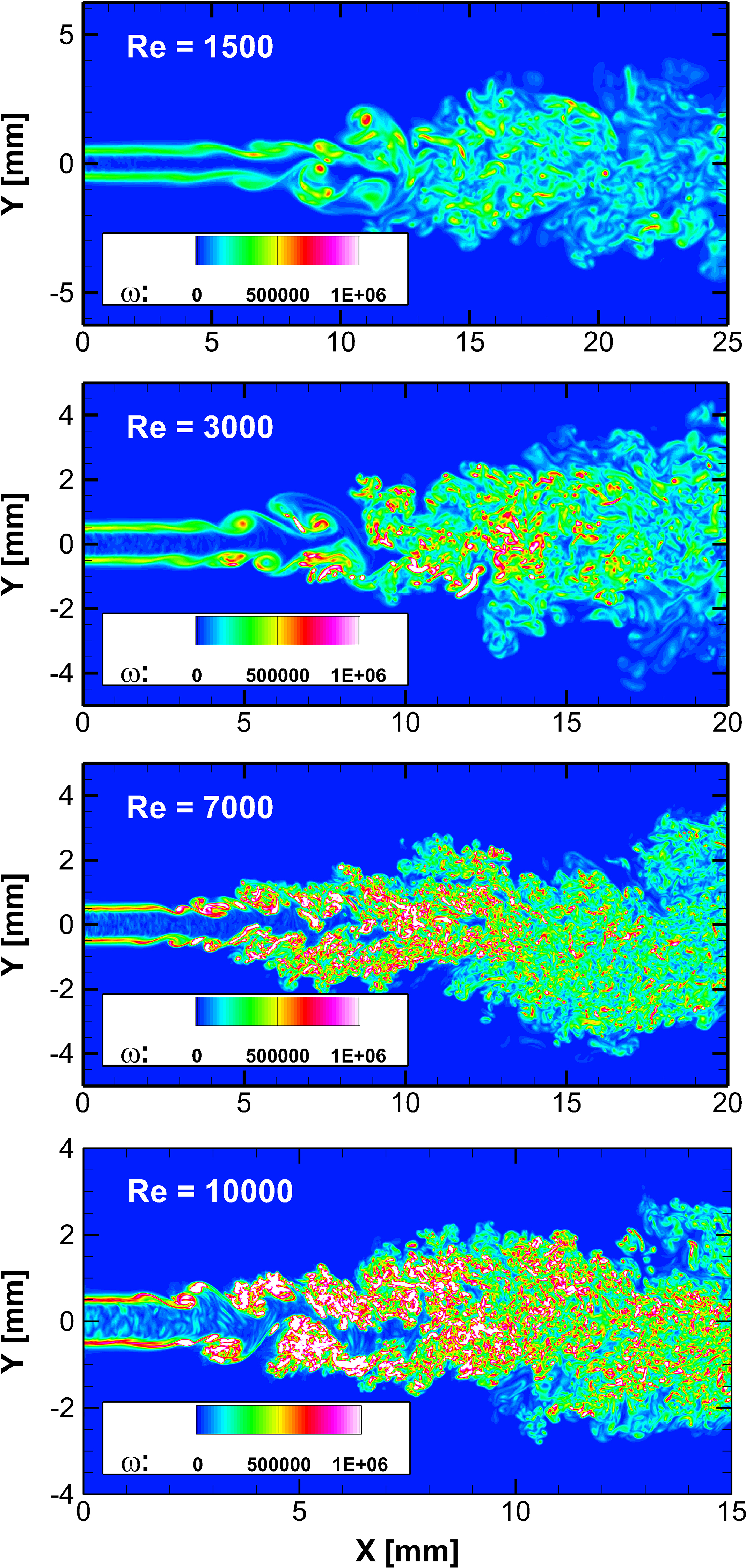SGS Stress Transport Equation-based SGS Modeling for Comprehensive LES Model
JAXA Supercomputer System Annual Report April 2018-March 2019
Report Number: R18ECMP08
Subject Category: Competitive Funding
- Responsible Representative: Shingo Matsuyama, Aeronautical Technology Directorate, Numerical Simulation Research Unit
- Contact Information: Shingo Matsuyama(smastu@chofu.jaxa.jp)
- Members: Shingo Matsuyama
Abstract
In this study, we aim to realize a comprehensive LES that does not require any tuning for model parameters to the target flow field by solving the SGS stress transport equations. The SGS stress equations are derived exactly from the spatial filtering operation, but requires modeling for the unclosed terms contained in the equations. Therefore, in this study, the unclosed terms are modeled by a priori test using a DNS database of turbulent plane jet, and we try to establish a new LES model with SGS stress transport equations.
Reference URL
Please refer to ‘KAKEN — Research Projects | SGS stress transport equation-based SGS modeling for comprehensive LES model (KAKENHI-PROJECT-18K03963)‘.
Reasons for using JSS2
In order to model the unclosed terms in the SGS stress transport equations, a priori test using statistical data by DNS is required for high Reynolds number condition. For performing DNS under high Reynolds number condition of Re > 10000, a numerical mesh of the order of one billion points is required. Such large-scale simulation can be executed only on a supercomputer, and therefore, supercomputer system is indispensable for carrying out this research.
Achievements of the Year
DNSs with 9th order spatial accuracy were performed using 0.1 to 1.3 billion grid points for Re = 1500, 3000, 7000, and 10000 (Fig.1). We also investigated the characteristics of SGS stress by a priori test using DNS data (Fig.2).

Fig.1: Instantaneous contours of vorticity magnitude on the x-y plane (z = 0) for the DNS at Re = 1500, 3000, 7000, and 10000 (from top to bottom). Cited from non peer-reviewed paper [2].

Fig.2: Instantaneous contours of SGS stress on the x-y plane (z = 0) for the DNS data at Re = 10000. Results obtained by varying the spatial filter size are shown. Citation from non peer-reviewed paper [2].
Publications
– Non peer-reviewed papers
1) Shingo Matsuyama, “DNS Study of Reynolds Number Dependence of a Turbulent Plane Jet”, Proceedings of the JSFM Annual Meeting 2018, 2018.
2) Shingo Matsuyama, “A Prioi Test Using DNS Data of a Turbulent Plane Jet for LES Modeling with SGS Stress Transport Equations”, Proceedings of the 34th TSFD Sympoium, 2018.
– Oral Presentations
1) Shingo Matsuyama, “DNS Study of Reynolds Number Dependence of a Turbulent Plane Jet”, the JSFM Annual Meeting 2018, 2018.
2) Shingo Matsuyama, “A Prioi Test Using DNS Data of a Turbulent Plane Jet for LES Modeling with SGS Stress Transport Equations”, the 34th TSFD Sympoium, 2018.
Usage of JSS2
Computational Information
- Process Parallelization Methods: MPI
- Thread Parallelization Methods: OpenMP
- Number of Processes: 1100 – 1500
- Elapsed Time per Case: 150 Hour(s)
Resources Used
Fraction of Usage in Total Resources*1(%): 1.24
Details
Please refer to System Configuration of JSS2 for the system configuration and major specifications of JSS2.
| System Name | Amount of Core Time(core x hours) | Fraction of Usage*2(%) |
|---|---|---|
| SORA-MA | 11,629,578.57 | 1.42 |
| SORA-PP | 0.00 | 0.00 |
| SORA-LM | 0.00 | 0.00 |
| SORA-TPP | 0.00 | 0.00 |
| File System Name | Storage Assigned(GiB) | Fraction of Usage*2(%) |
|---|---|---|
| /home | 399.29 | 0.41 |
| /data | 1,899.35 | 0.03 |
| /ltmp | 325.52 | 0.03 |
| Archiver Name | Storage Used(TiB) | Fraction of Usage*2(%) |
|---|---|---|
| J-SPACE | 0.00 | 0.00 |
*1: Fraction of Usage in Total Resources: Weighted average of three resource types (Computing, File System, and Archiver).
*2: Fraction of Usage:Percentage of usage relative to each resource used in one year.
JAXA Supercomputer System Annual Report April 2018-March 2019


